Thirteen studies in soundscape-style, based op atomic spectra.
In this nanotonal music, frequencies are played very accurately (63 bit) by computer.
Rythms arise - as a matter of course - by the beatings between the many spectral lines that sound
together.
The studies are based on a large database (80 MB ASCII) with spectral lines of
allmost all chemical elements and ions by Robert L. Kurucz.
The composer carried out minimal sound-design:
light-frequencies, from infrared to ultraviolet, were transposed down exactly 40, sometimes 39,
octaves to make them audible. Composing concerned the distribution of these 564942 tones in time.
Below, one can download the pieces, listen to them, and perhaps burn one's own audio-CD with them.
These are all flac files, 16 bit, stereo, 44.1 KHz. On the right, one may recall some of the generated
musical scores.
| 1 |
|
ST1.16HSmndljv |
|
Mendelejev progression hydrogen to sulphur
(H He Li Be B C N O F Ne Na Mg Al Si P S) |
6:30 |
|
65.7 MB |
|
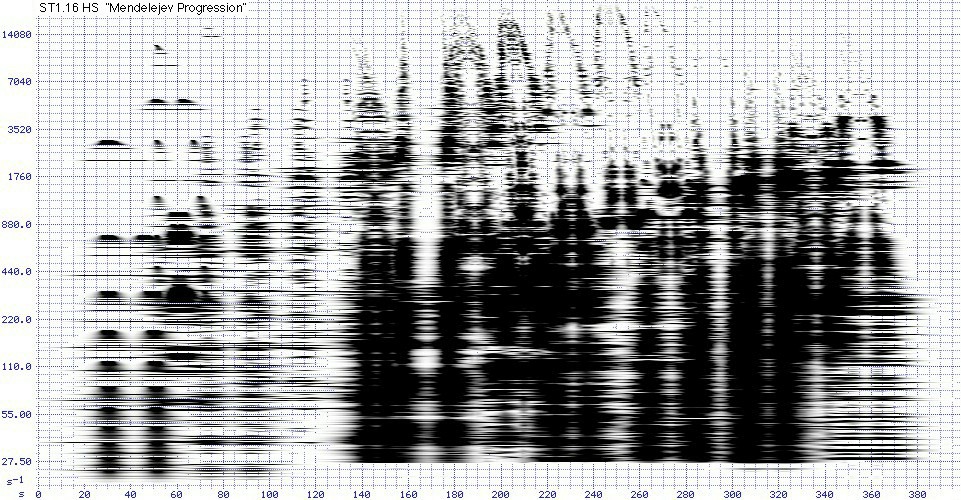 |
| 2 |
|
ST0.44twoWeeks |
|
Alchemistic metals and ions
(Au Ag Fe Hg Sn Cu Pb -- Ag+ Fe+ Hg+ Sn+ Cu+ Pb+) |
6:03 |
|
61.2 MB |
|
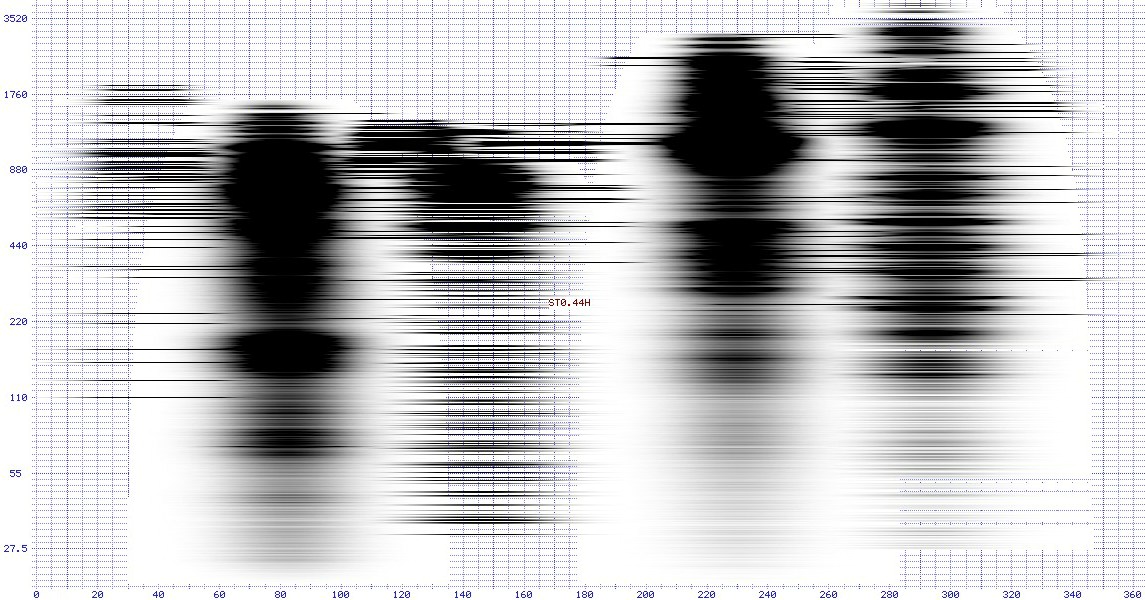 |
| 3 |
|
ST1.14HOmndljv |
|
Mendelejev progression hydrogen to oxygen
(H He Li Be B C N O) |
3:42 |
|
37.4 MB |
|
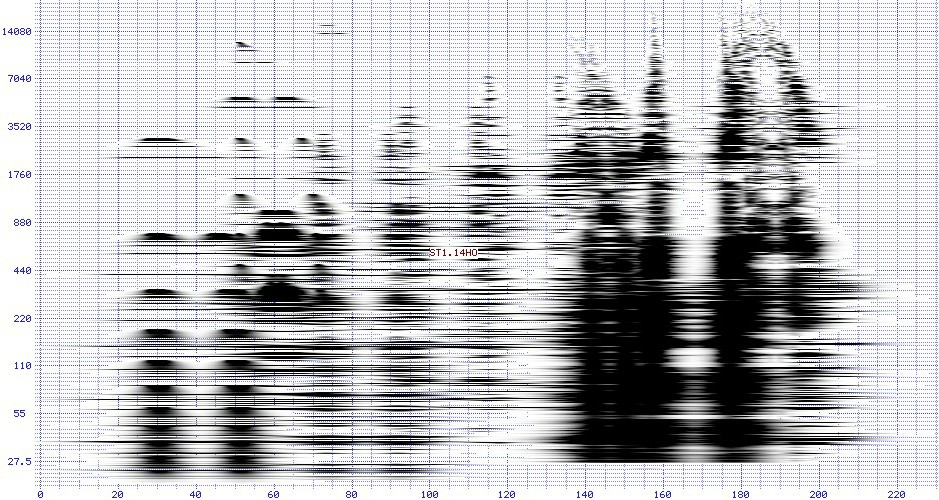 |
| 4 |
|
ST0.33AuGliss |
|
Gold glissando (Au) |
1:13 |
|
12.4 MB |
|
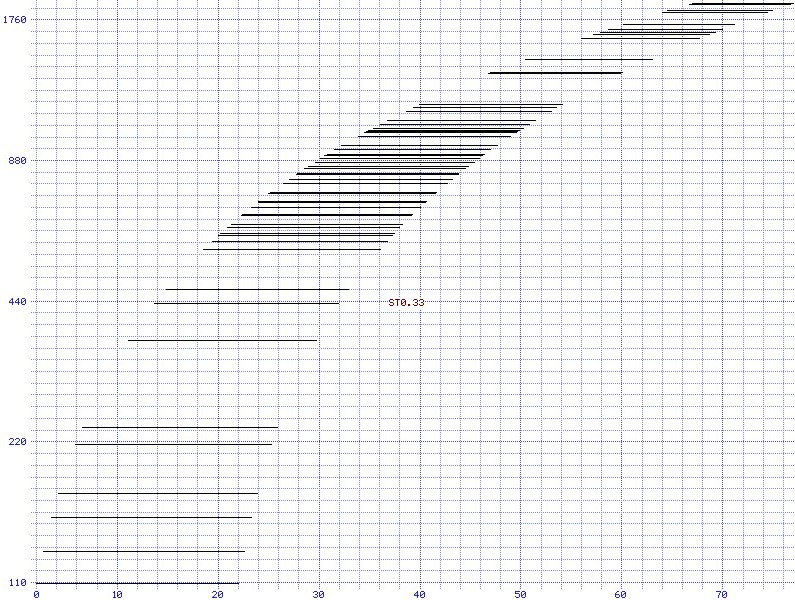 |
| 5 |
|
ST0.33AgGliss |
|
Silver glissando (Ag) |
0:27 |
|
4.6 MB |
|
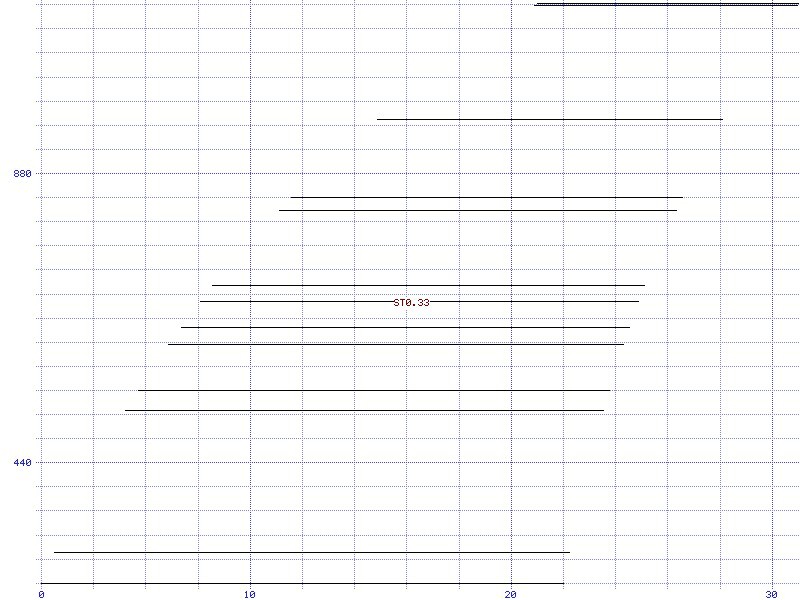 |
| 6 |
|
ST0.33FeGliss |
|
Iron glissando (Fe) |
0:33 |
|
5.7 MB |
|
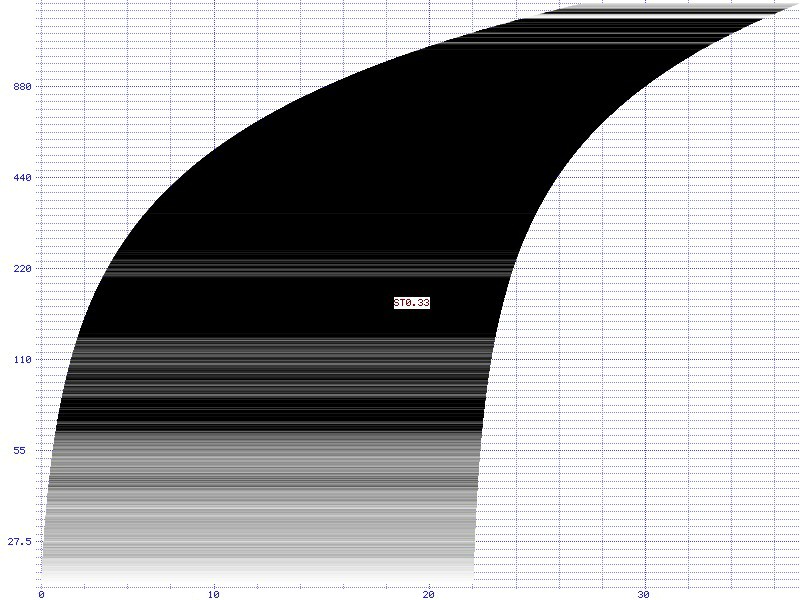 |
| 7 |
|
ST0.35energyH |
|
Hydrogen horizontal smeared (H) |
1:00 |
|
10.1 MB |
|
 |
| 8 |
|
ST0.35togetherH |
|
Hydrogen vertical (H) |
1:33 |
|
15.7 MB |
|
(see energyH) |
| 9 |
|
ST0.33AuAgGliss |
|
Gold and silver glissandi (Au Ag) |
0:54 |
|
9.2 MB |
|
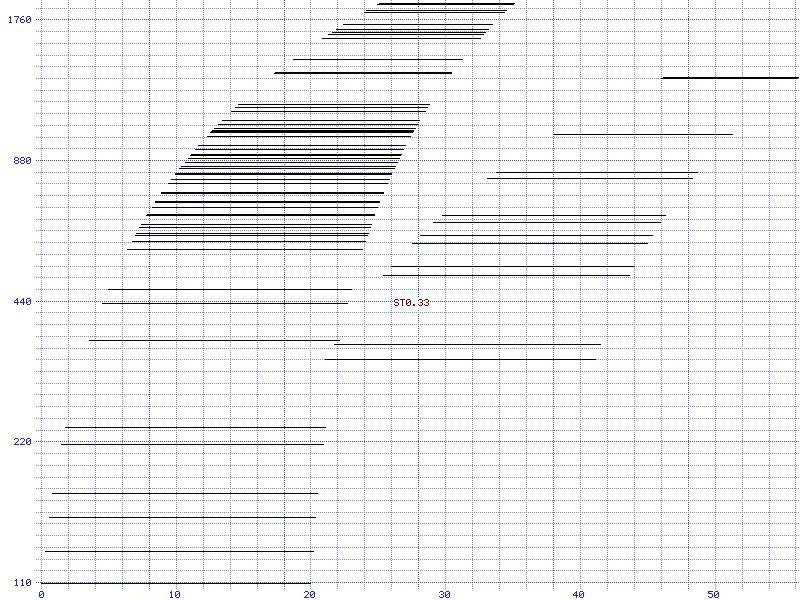 |
| 10 |
|
ST0.07HOionErr |
|
Hydrogen to oxygen staccato (H He Li Be B C N O) |
6:03 |
|
61.3 MB |
|
(timing errors) |
| 11 |
|
ST0.08HOionErr |
|
Hydrogen to oxygen legato (H He Li Be B C N O) |
11:51 |
|
119.8 MB |
|
(timing errors) |
| 12 |
|
ST0.24week39 |
|
Week 39 octaves (Au Ag Fe Hg Sn Cu Pb) |
3:44 |
|
37.8 MB |
|
(octave higher
than ST0.26) |
| 13 |
|
ST0.26week40 |
|
Week 40 octaves (Au Ag Fe Hg Sn Cu Pb) |
3:27 |
|
35.0 MB |
|
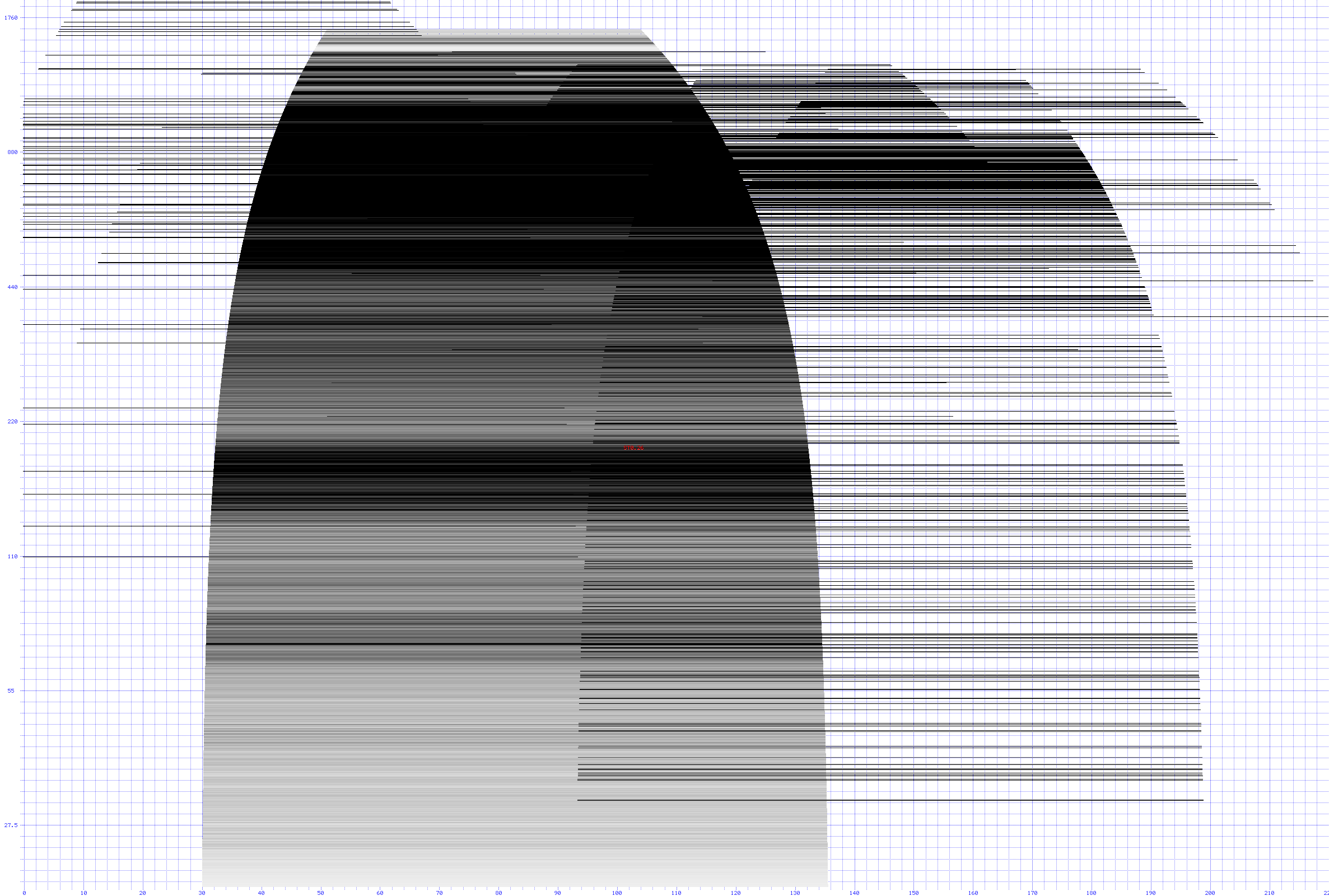 |
|
|
|
|
|
|
|
|
|
|
|
|
|
|
total: |
47:00 |
|
474.4 MB |
|
|
All sounds and images were created with Spectroscopic Toolkit.
Instead of downloading the many megabytes above, one may download the software, which is only 18 MB,
and calculate the results on one's own's computer.
Spectromorphological rules in studies ST0.07 and ST0.08 are the most fascinating.
Listening to these pieces, one really feels submerged in the quantumphysical world.
Actually these are 2 failures because in this early stage of the software timing-errors still
occured. An unintended but beautiful morphology!
In studies ST1.14 and ST1.16, the periodic table is stepped through, element by element.
In the last one, which continues up to sulphur, it becomes clear the applied morphology won't
captivate when this process is continued - in the same manner - up to the 109th element. Almost terrifying sounds the
transition nitrogen-oxygen-fluorine.
In ST0.24, ST0.26 and ST0.44 an alchemistic arrangement is chosen.
There exists a link between the 7 metals gold, silver, iron, mercury, tin, copper and lead, the 7
heavenly bodies sun, moon, mars, mercury, jupiter, venus and saturn, and the 7 days of the week.
The most complex and dense spectra come from iron and copper, by accident exactly those 2 that
respectively symbolize the masculine and the feminine.
The titles of the glissando-études (ST0.33xx) are deceptive because pitch-rise only occurs
in discrete steps (quantum-leaps), so actually these are tone-scales. Remarkeble is the
"cadence-quality" of these rising scales.
Thanks to Robert L. Kurucz and Barbara Bell for all the spectral lines.
Some of the above materials were also presented at:
| |
CEM's Café Sonore |
|
Amsterdam, june 18, 2001 |
| |
Theater Kikker's Proeflokaal |
|
Utrecht, september 18, 2001 |
| |
NPS' Supplement |
|
Radio 4 broadcast, december 15, 2002 |
Thanks to Dyane Donck and
Jorrit Tamminga for promoting nanatones.
Pieter Suurmond, december 20, 2002